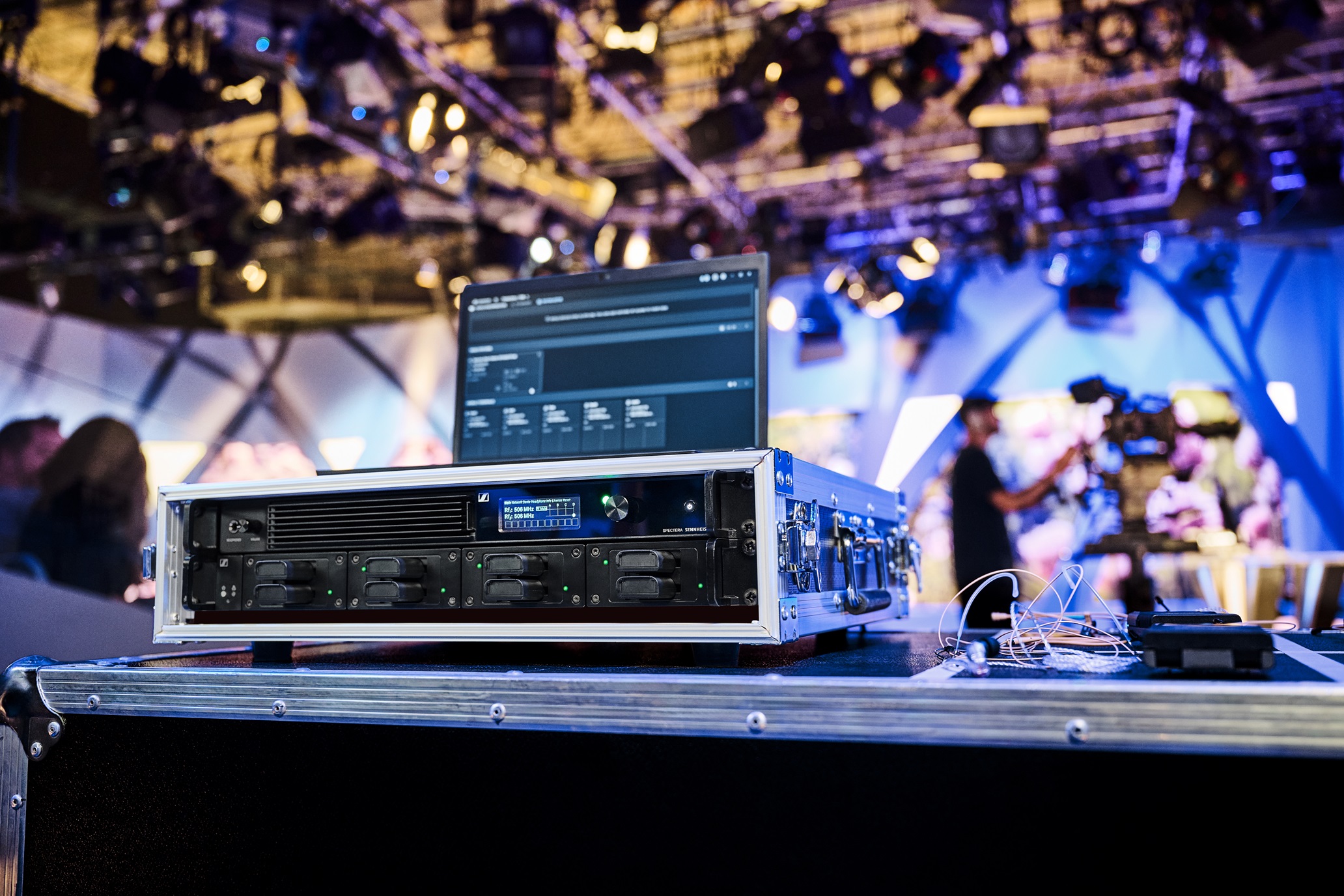Sennheiser Unveils Spectera Digital Wireless Audio Transmission System At IBC 2024
Spectera leverages Wireless Multichannel Audio System tech to reduce complexity and increase capacity

AMSTERDAM—Sennheiser has introduced its Spectera digital wireless audio transmission system that delivers bidirectional wideband functionality by leveraging WMAS (Wireless Multichannel Audio System) technology here at IBC 2024.
Use of WMAS technology enables Spectera to reduce wireless system complexity, while at the same time increasing capability, enabling time-saving workflows and offering full remote control and monitoring, including permanent spectrum sensing, Sennheiser said.
Spectera features bidirectional bodypacks that manage both digital IEM/IFB and mic/line signals at the same time. The solution is resistant to RF fading and allows for flexible use of a wideband RF channel, for example for digital IEMs with a latency down to a spectacular 0.7 milliseconds, it said.
“We are thrilled to see years of technological development and spectrum policy work turn into a digital wireless ecosystem that will solve many of the issues that users of wireless multichannel systems are faced with today,” said co-CEOs Andreas Sennheiser and Daniel Sennheiser in a joint statement.
“Our wideband solution will be ideal for large productions, whether in the touring, broadcasting or theater fields, or in any other area that requires multichannel audio setups. Spectera satisfies our customers’ chief desires and needs regarding ease of use, operational reliability and flexibility. It offers less hardware, drastically reduced frequency coordination, redundancy and the flexibility of an ecosystem that grows with your needs.”
Bidirectional digital wideband transmission addresses many common challenges, such as overly complex frequency coordination and complicated rack cabling for high channel counts as well as the large footprint typical of a multichannel wireless system, the company said.
Sebastian Georgi and Jan Watermann are the inventors of Sennheiser’s specific approach to WMAS. The technology they developed is a proprietary variant of OFDM-TDMA, specifically tailored to reliable multichannel, bidirectional, low-latency communication.
Get the TV Tech Newsletter
The professional video industry's #1 source for news, trends and product and tech information. Sign up below.
“Instead of many individual 200 kHz narrowband RF carrier frequencies, we use a single wideband RF channel for audio transmission – bidirectional transmission of audio and control data, to be more exact. In Sennheiser’s approach, the wideband RF channel is a TV channel of 6 or 8 MHz, depending on local regulations,” they said in a joint statement.
The WMAS system organizes audio links within this channel. Every audio link is assigned a specific time slot for transmitting its audio information, making it possible to have IEMs and mics in the very same TV channel instead of two channels separated by a guard band. A single 6 or 8 MHz channel can accommodate an entire production, the company said.
The Spectera ecosystem base station is a single rack unit with 32 inputs and 32 outputs and replaces a rack-full of wireless mic receivers and IEM transmitters, it said.
The system’s SEK bodypacks are space-savers as well because the same bodypack can handle both IEM and microphone or instrument requirements, and this can be flexibly determined and changed during a show, it said.
The bodypack features a 3-pin connector for a lavalier or headset microphone or an instrument cable, such as the CI 1-4. The 3.5 mm headphone jack connects to Sennheiser’s range of professional in-ear phones and features an impedance-matching high-power headphone amplifier.
The bodypack is available in UHF (470 – 608 MHz and 630 – 698 MHz) and 1G4 (1350 – 1400 MHz and 1435 – 1525 MHz) frequency variants.
See Sennheiser at IBC 2024 Stand 8.D50.
More information is available on the company’s website.
Phil Kurz is a contributing editor to TV Tech. He has written about TV and video technology for more than 30 years and served as editor of three leading industry magazines. He earned a Bachelor of Journalism and a Master’s Degree in Journalism from the University of Missouri-Columbia School of Journalism.

